A-Class, Winged: Interview with Thilo Keller



Wings have been part of catamaran racing for a while now. Some are still developing to get best performance out of current standard equipment, Thilo Keller goes farther, aiming to what is going to become the defacto technology in the future: Wings.. I’ll be 60 and riding my kids winged A-Cat.
Weight and breakage are still an issue, but it will be solved. When I think of the future of catracing I see this picture to the left.
Below a full detailed interview made by german A-Class member Rainer Bohrer. Check also his dynamic presentation with video at https://prezi.com/qm-slsakdqt3/wingsail-development/
—————————-
Interview by Rainer Bohrer – A-CAT Wing-
Interview with Thilo Keller (age 24), majoring in naval architecture in Berlin and an passionate A-CAT sailor.
Thilo Keller’s past achievements include successfully developing his own competitive design for a catamaran platform, the “Arrow.” Just recently, in April 2012, he presented the results of his latest project, an A-CAT wing, which came as a great surprise to the A-CAT scene. Patterned after the C-CAT and current America’s Cup boats, the goal of his wing construction is to replace the familiar soft sail in the single-handed catamaran class in the future. This general trend is viewed quite critically among sailors, because wing constructions increase the sport’s complexity and the expense and effort for the sailor, and it would likely have a negative impact on class size. The popularity enjoyed by the A-CAT today is also based on the simplicity and lightness of the boat. T. Keller argues against this view and predicts that when wings offer added value they will take hold in the sport. In his opinion, prohibiting such a modification is not really a solution in an open design class, because the class cannot simply shut out state-of-the-art technology on the long term.
–Thilo, at the end of April you and your team presented a prototype of an A-CAT wing. Congratulations on your success so far on this project.I It was a successful presentation that also elicited a great deal of surprise!
Thank you. It involved a tremendous effort by our team! To see a project to completion with a total of about 15,000 to 20,000 working hours while in the midst of one’s college studies is no small achievement. Certainly, we could have informed the community of intermediate results, and that might have even heightened interest in the project, but our approach may have allowed us to gain a larger lead over the competition.
–What was the primary motivation for the work-intensive project; do you want to race the wing to win the A-Class Catamaran Worlds in Islamorada 2012, Florida?
(laughs) “Our motivation was and still is, as Audi says so beautifully: Advancement through technology! We actually are targeting wins at regattas, certainly with a view towards Florida! Our original plan was to enter the World Championships as soon as last year with the wing. Unfortunately, due to technical problems that lengthened construction time, we were not able to accomplish that goal.
However, we are now definitely targeting the World Championships in October 2012. Along the way to that goal, we must first overcome a few obstacles; among other things we need a trailer so that we can travel practically and safely with the wing …




–What do you see as the fundamental advantages of the wing compared to today’s already highly developed mast/sail combinations?
Clearly, the primary advantage compared to normal sails is the wing’s more stable profile. It offers a way to avoid the disadvantageous continual movements that otherwise occur. At the same time, our mechanical design is able to ensure flexibility within desired limits. The wing must twist somewhat in a gust like a normal sail, for example.
The end effect is that the more stable profile offers less wind resistance. The forces acting in the rig are enormous, and wind resistance is still about 70 % of water resistance and represents a large share of the overall resistance of the boat in motion.
From my perspective, it is simply logical to pursue future advanced development, especially in the rig. The potentials of A-CAT platforms have already been exploited for the most part, and the greatest potential certainly lies above the waterline. Even today, one can see the small iterative improvements that are made in the sails every year; we want to counter this with an innovative leap.
–Is it possible to quantify the theoretical performance difference between a sail and your wing?
From a computational viewpoint, the performance increase could amount to as much as 20%. But if only one percent were to be realized on the water that would already be a quantum leap. In comparison, the rate of performance increases in sails is on the magnitude of tenths of a percent per year. Nonetheless, the often cited comparison of the boat performance in the 2010 America’s Cup is flawed. BMW ORACLE with its wing was significantly faster than Alinghi with its soft sails, but BMW had a number of other advantages, all of which added up, including their longer preparation time and the boat’s greater waterline width, which made the BMW boat’s righting moment significantly larger. Therefore, in my opinion, only part of the performance difference observed at that time can be attributed to the wing. So, the performance situation would not be shifted dramatically for the A-CAT; that would be a false expectation. Rather, small yet decisive performance advantages could be expected.
–Have your on-the-water tests confirmed your theory?
So far, we have conducted two test sessions, but we have not made any boat-to-boat comparisons yet, so we are still eager with anticipation. What we were able to observe in testing is that the wing poses different challenges than a normal sail; in particular, sail trimming is a very delicate matter! When the trim is not just right, the air flow over the wing stalls over its entire height, but if it is correct the performance is powerful. It is precisely these challenges in trim that will presumably decide whether the wing will prevail on the A-CAT, i.e. on a one-man boat with limited trimming capacity.
In sum, tests have been positive so far, and our initial impressions are that the wing offers advantages, especially upwind; it is simply possible to point up extremely high when beating …
–Have you based your design on a special development level of the wings of the AC 45, C-CAT or on the last A-CAT wing by Ben Hall from the year 2007?
From the current C-CAT wings, we took our basic idea that there should be three wing elements in series. This concept still appeared feasible to us for a singlehanded boat. When more elements are added, the mechanical demands are simply too great. But aside from this basic idea, we started with a blank sheet of paper.
–What role did you play on the development team?
At some time, I had the idea of building a wing and began to draw basic sketches. The team then grew relatively quickly into a solid core of five people without whom the project could not have been realized. In the actual construction phase, we had up to 15 team members for some time, which is a very great effort! Since you asked me about my role: I focused on the design, 2D simulation, project coordination and layout of the components. For example, the complex 3D simulation generated a table that showed us which attack angles to use in which winds with the wing; that was a separate senior thesis project by my colleague Florin Boeck.
My own Bachelor degree thesis focuses on the interactions with the hydrodynamics of the boat, i.e. what moments act on the platform due to the water. Altogether I then want to be able to perform comprehensive speed computations and VPP of the boat with a wing at various wind strengths.
–Could you briefly explain the technical construction of your wing?
The wing consists of three elements whose angles relative to one another are adjustable. The amount of twist can be controlled independently for each of the elements, including the one furthest forward. In our opinion, the different attack angles over the entire height of the wing that our design permits are essential. Currently, we are working with a mainsail aspect ratio of 1:3, where 1:2 would probably be sufficient. We intentionally built the wing taller and more elliptical, because we expect this configuration to offer fluid flow advantages, e.g. in vortex distribution. But this theory is public knowledge that can be read in many sources.
Ben Hall (USA) used a wing at an A-CAT World Championship back in 2007 and took 30th place, even before the wing hype of the last America’s Cup.
–What makes your wing different from the development of that time?
Our wing already represents an advanced state of design compared to Ben Hall’s. For example, we can control the gap between the front and rear elements on the water by means of a flap; on Ben’s wing, this could only be done on land using various bores. This enables a larger, well-functioning bandwidth of small attack angles on upwind legs and large attack angles on downwind legs (Comment: see also the online presentation https://prezi.com/qm-slsakdqt3/need-for-speed/). Furthermore, at that time Ben had a relatively short preparation time before traveling to the event, yet with his results he was able to demonstrate to everyone that a wing could in principle be competitive with a normal sail, even on the A-CAT.
–How heavy is your wing?
Today, in ready-to-sail condition, the boat weighs 79 kg (comment: minimum weight for an A-CAT is 75 kg); the wing alone weighs much less than 30 kg, while a comparable rig with a sail might weigh 20 to 23 kg today. It should be no problem to further reduce wing weight for series production. I think that at least an additional 25 % of the current weight of the wing could be saved, and this would essentially eliminate any weight disadvantages. We are seeking out a partnership with the academic department for aerospace engineering within the university to optimize the structure for this. However, in implementing any weight reductions, the stability of the wing must be assured, e.g. in the event of a capsize; we also want to simulate such special load cases for the design.
In the end, it is the majority of participants in the sport that will decide whether the technology will prevail; isn’t that right?
Exactly. If a person has more success with a wing, then it will take hold, or it will be prohibited. The latter depends very much on national representatives on the committee of the international class association, the IACA. In principle, a development like a wing should not be prohibited in my opinion. And for the following reasons: For one, we are an open catamaran design class, and in such a class it must be possible to implement an advanced technical development based on state-of-the-art technology; otherwise, the class will lose its attraction over the long term. In addition, it has been common knowledge for many years that development work was being conducted on wings for the A-CAT. In my opinion, if they were to be prohibited as soon as they proved to be superior in sports performance, that would hardly be a fitting reward for the enormous development effort involved, and this would have a very negative impact on the climate for new developments. What kind of message would that send! Naturally, one must evaluate whether broad introduction of a new technology has a negative impact on the class, but then it would still be necessary to make exemptions for existing wings.
The disadvantages that are cited regarding handling of the wing on shore can also be overcome, in my opinion. Here too, there will be solutions that will make it possible to handle them singlehandedly on land. On today’s boats and rigs, sailors help one another in loading and mast stepping situations. In principle, I do not see such a dramatic difference in handling between a wing and a mast/sail combination.
–Perhaps we could clear up a few preconceived notions about wings. What are their race starting behavior, and what can be said about their potential for pitching?
Clearly, the center of gravity is higher with a wing, but in my opinion this is not significant, because the primary weight of the platform and sailor are close to the water surface, and it stays there. The enormous reduction in wind resistance should more than compensate for this effect. But honestly, nearly all advantages are attained at the cost of certain disadvantages, and the additional pitching is probably the greatest disadvantage of the design from a sailing perspective. If one considers the most advanced boat developments today, they exhibit very good wave piercing properties and curved stabilizing daggerboards, which also limit pitching. And maneuvers can be performed easier and quicker in my opinion, because the sailor can cross unhindered from side to side behind the wing and no longer needs to release the tiller and sheet to duck under a boom. I have not seen any disadvantages at the start either, although we have little experience there; it may be that one has to fall off for one or two seconds, but afterwards the boat sails much higher to the wind.
–Just how expensive is your beauty of a wing?
The project was conducted through the Institute for Fluid Mechanics and Engineering Acoustics in the academic department of Experimental Fluid Mechanics and was led by Professor C. O. Paschereit. This gave us the opportunity to receive some grants, approx. 19,000 EUR over two years. In addition, our sponsors made large material and asset contributions. We incurred expenses of about 80,000 EUR just for tools, materials, test runs, etc. If work hours are assessed at full value, then one arrives at the enormous sum of 300,000 to 500,000 EUR to construct the prototype.
I cannot really tell you today what kind of scaling effects would be realized in series production; we can only guess at that.
–When you switch to a wing, do you need to re learn sailing?
Certainly, a sailor will first be looking for the familiar trimming features, but they are no longer there, or are completely different, except for the mainsheet perhaps. However, new trimming options – identical in number – take their place, and they have a more direct and logical effect on the wing profile. A conventional sail is much more fault-tolerant due to its large twist. So, trimming the wing requires a lot of precision. However, once underway the wing is, in my opinion, even a bit less complicated in terms of trim adjustments.
Certainly, another huge advantage of the wing is that it can be adjusted very well for all wind strengths. Only one wing is needed for the entire range of wind strengths, and it is not necessary to change out battens or even keep multiple sails in reserve for different conditions. Wings also exhibit greater natural form stability and should therefore be more durable, e.g. in the used equipment market.
–Didn’t first (production) generations of wings quickly become obsolete and lose their value?
No, it does not have to be that way at all. If one looks at the boat market, for example, if someone purchased a Nikita ten years ago, it is still absolutely competitive today …
–Moreover, after broad introduction of wings would you see the need for further development efforts for the existing boat fleet?
In principle, the wing is nothing other than a sail. What is important is to coordinate the pressure points in the longitudinal direction. So that the balance of the boat is not significantly changed.
But it may be the case that the higher power output of the wing would, over the long term, lead to hulls with greater volume, because even more pressure is developed downwind. Or perhaps this additional need for lift could be compensated by different daggerboards or simply by a different daggerboard position. Upwind, not much will change, because the limiting factor here is the righting moment, which is limited by the maximum width of our boats.
–Do you find sailing with a wing to be more fun now?
So far, I have not noticed any big difference. As I said, the rig reacts more directly, and that is certainly a matter of taste. At low wind speeds, where one wants to generate maximum pressure with high attack angles, the airflow sometimes stalls over the entire height of the wing, and that is hardly any fun at all. But if one wins regattas thanks to the wing, then perhaps …
What still needs to be done before we can see you in races with the wing?
In the next two months, we still want to work on the open issues mentioned above, and we are planning for our first regatta participation at the Warnemünder Week (Comment: July 13 to 17) or shortly thereafter.
Thank you very much for the progress report! I look forward to the first regatta experience with the wing and our next talk about it, possibly at the world championships in Florida!
This interview took place on May 17, 2012. Rainer Bohrer
———— ENDS————

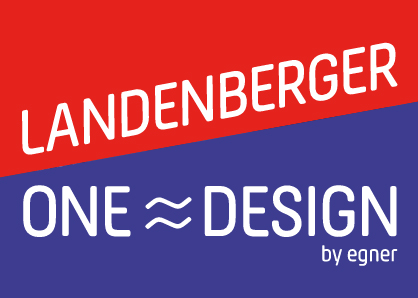
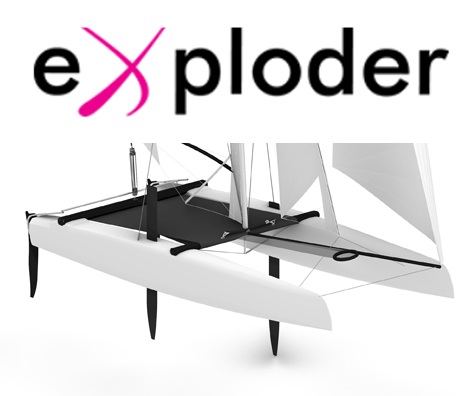
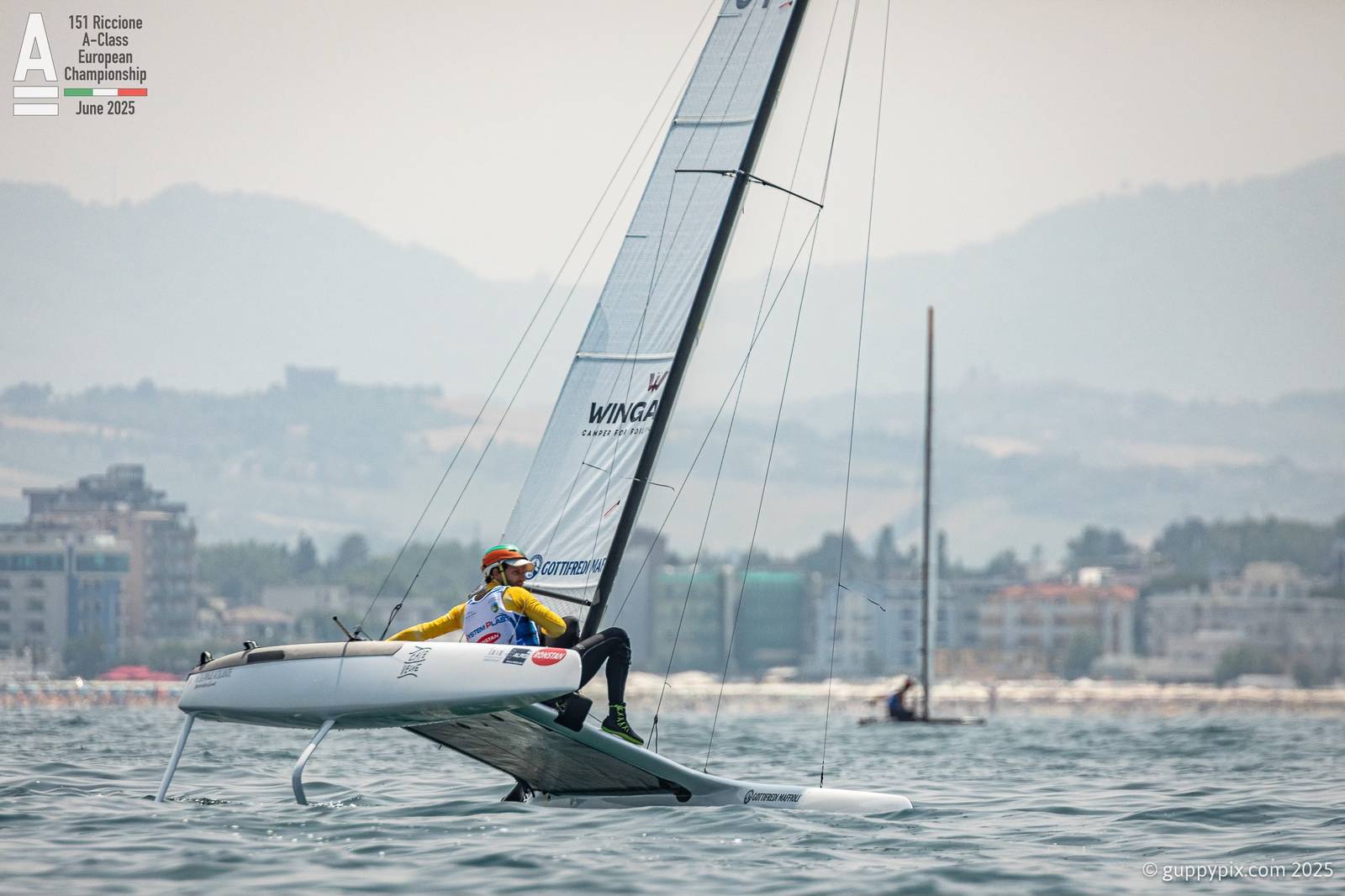
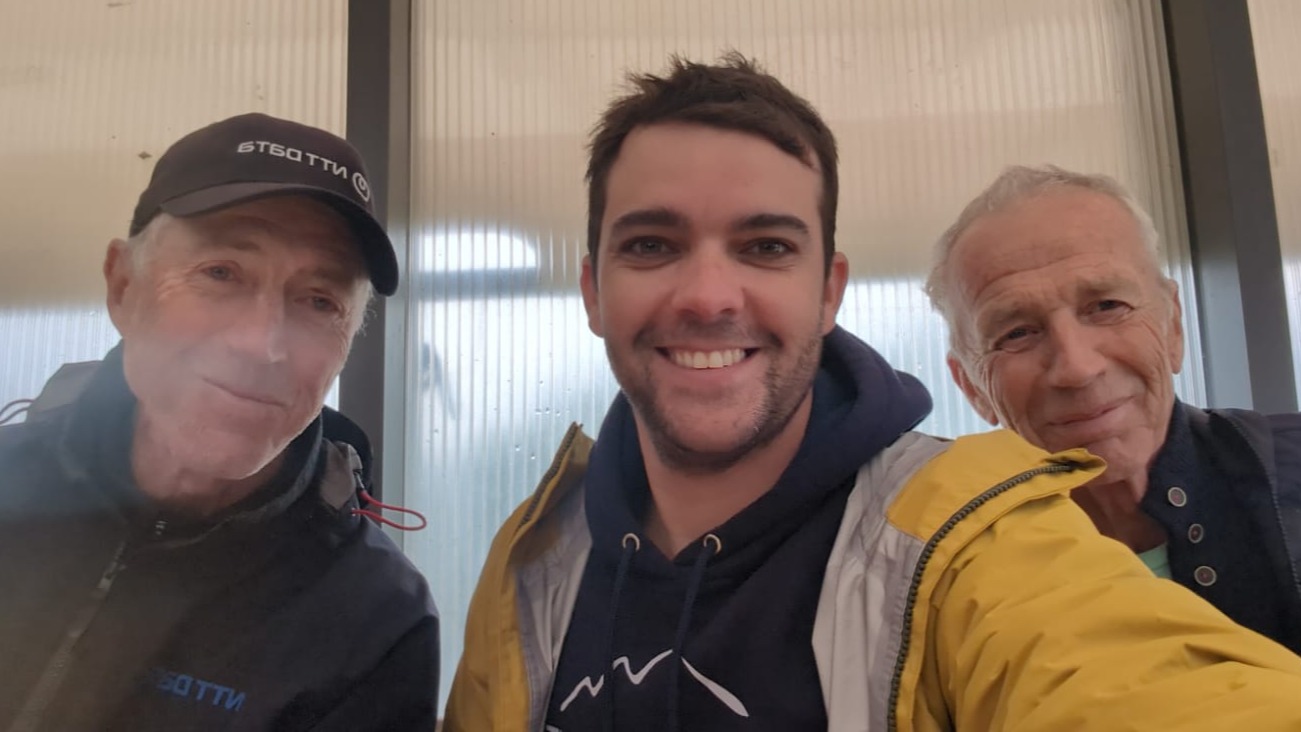
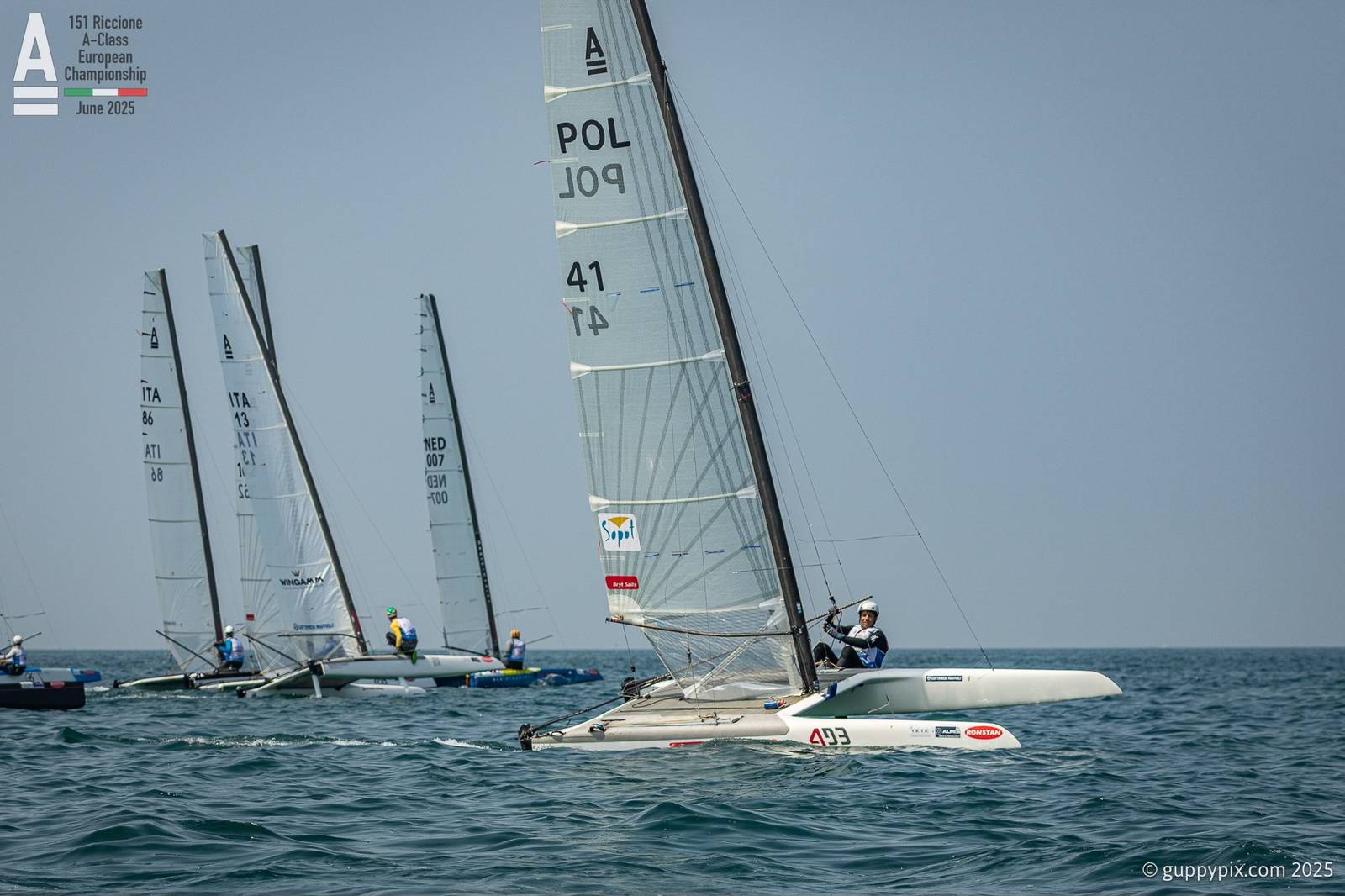
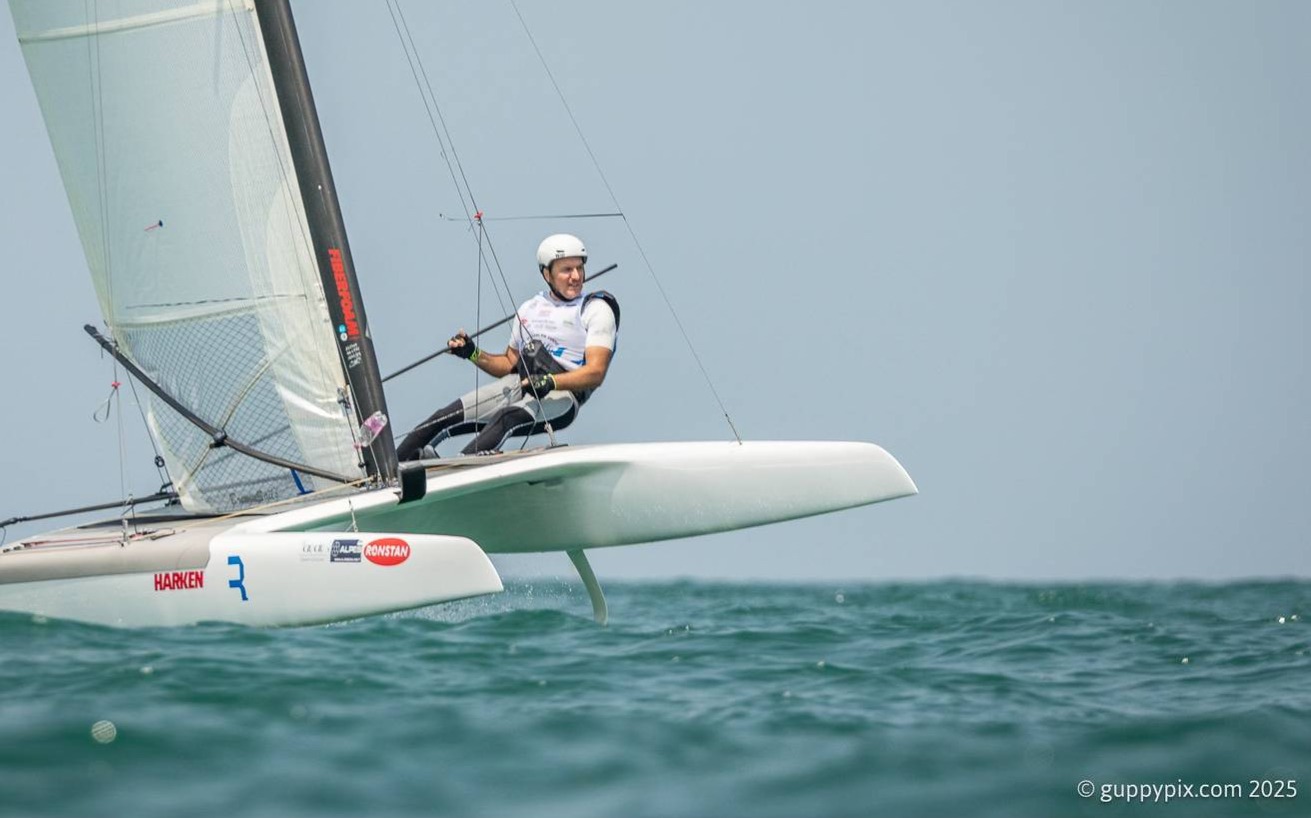
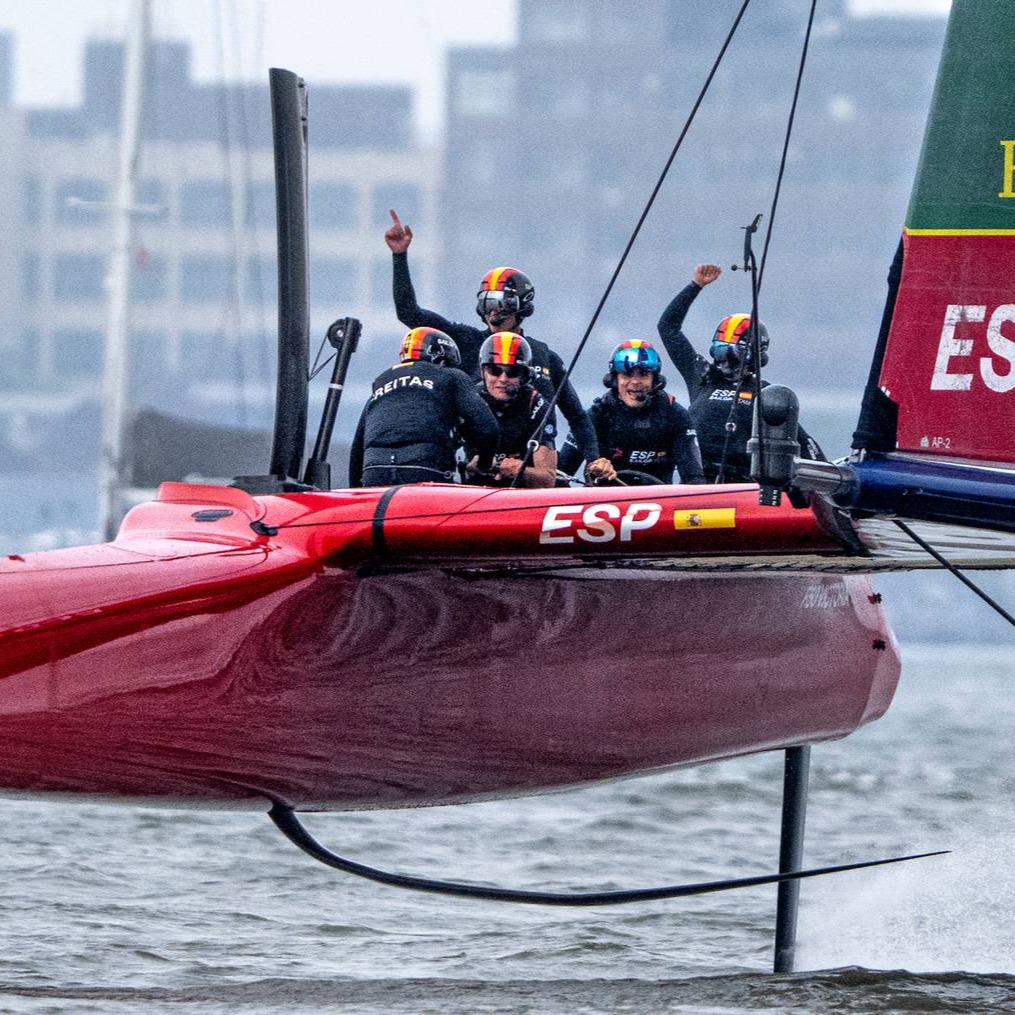
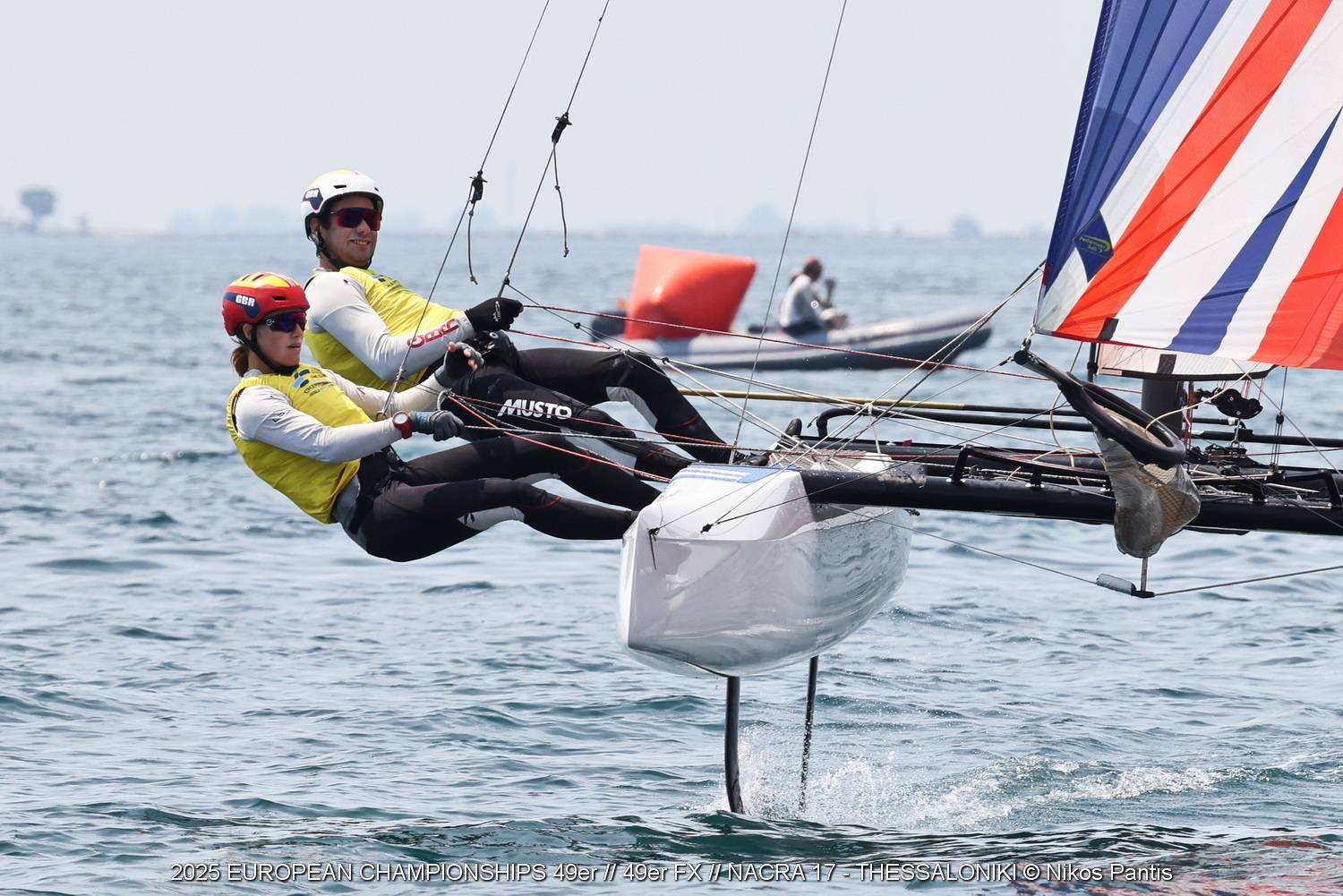
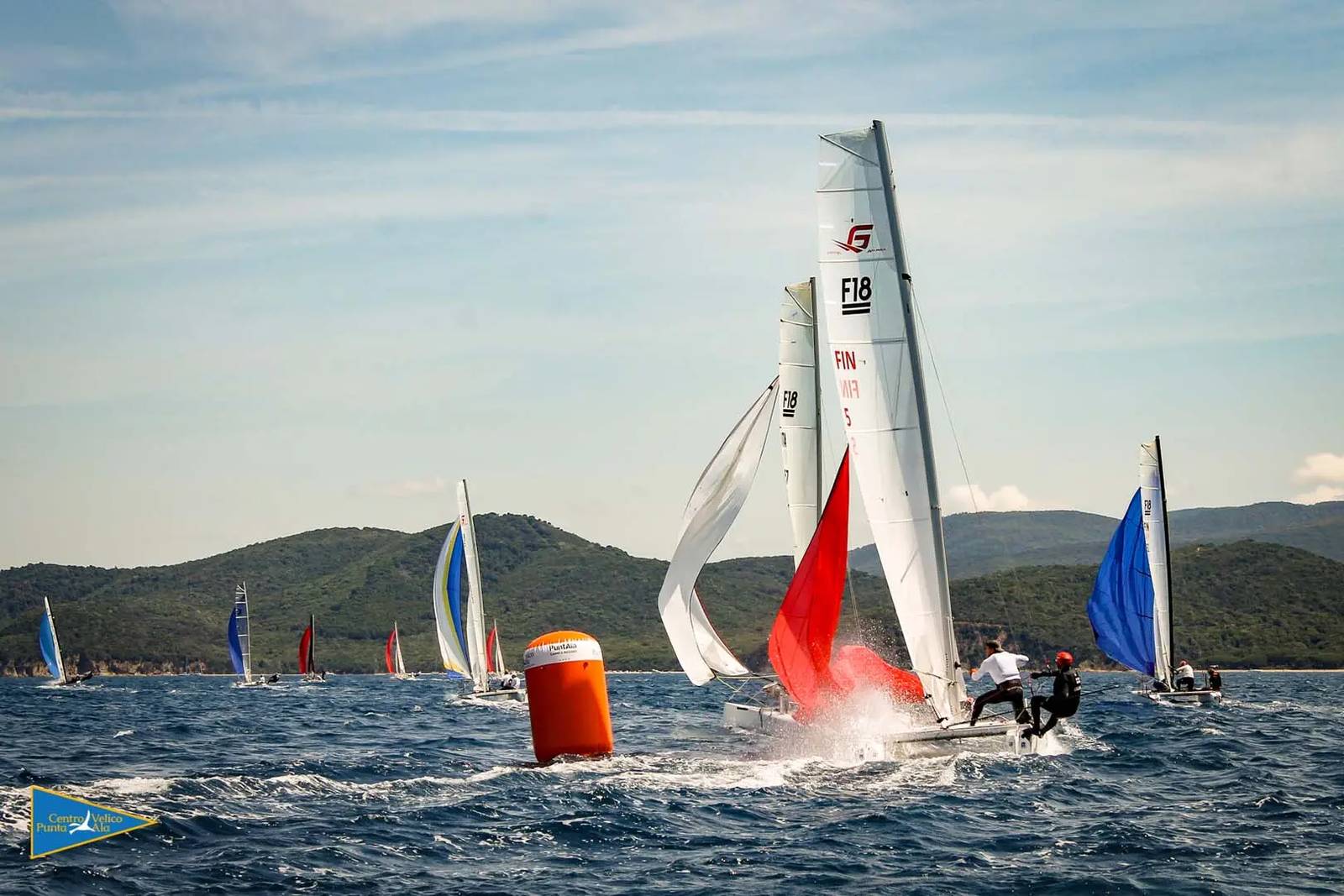
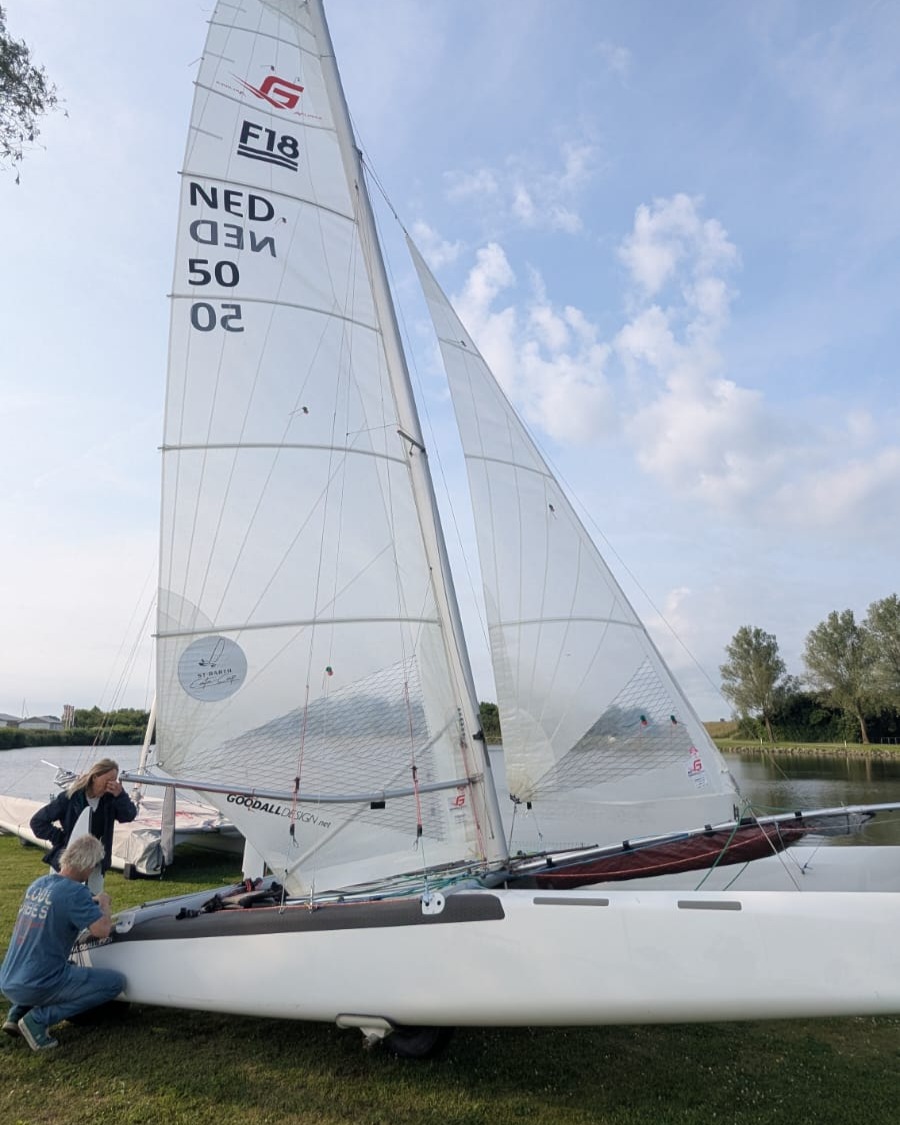
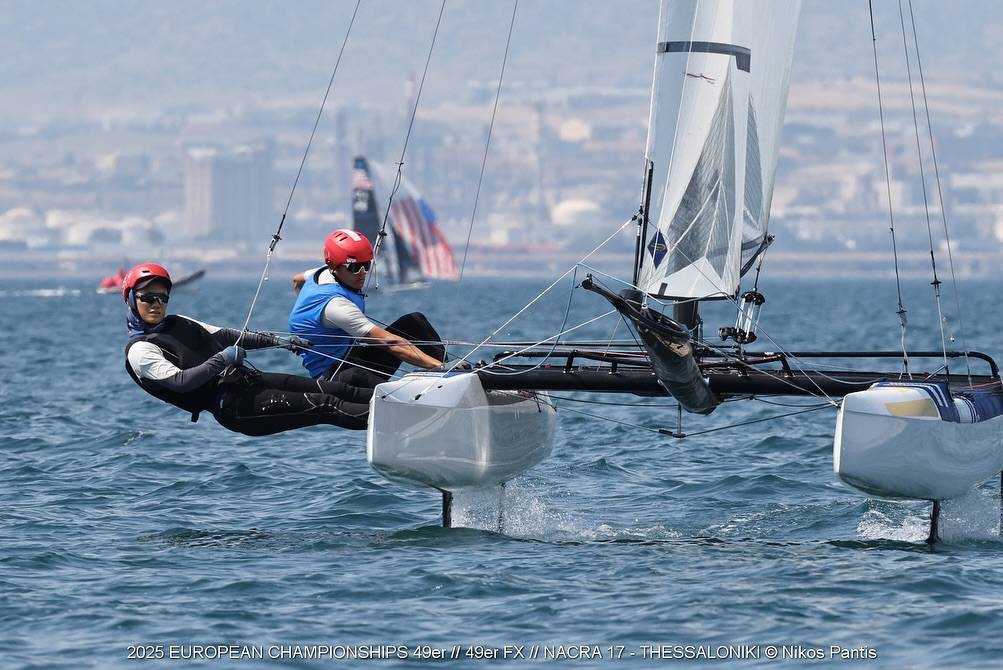



















Teo di Battista , 3° of Classic using Exploder Ad3 2016 version instead Scheurer .
I just heard that my great sailing friend and former CEO of Hobiecat Europe has passed. May The endless oceans…
...Report was sent by an F18 Sailor, if you want Hobies reported send your own, we'll publish as usual. Cheers.
Looks like in your report the Hobies are not really present. Suggest to rewrite the article.
Thanks for the great report Wik. Great battle.